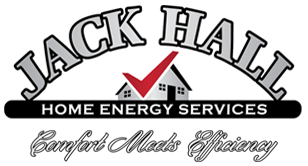High humidity levels are something you want to look out for inside the house. Why? Well, if your home is too humid it can cause significant moisture-related damage and encourage mold growth.
So now you’re probably wondering how to check indoor humidity levels. Many new thermostats, especially smart thermostats, provide a humidity reading you can see on the thermostat screen or even with an app on your phone. If the thermostat doesn’t track this data, a small, inexpensive tool called a hygrometer is the best alternative.
Once you’ve checked the humidity level, what numbers are you looking for? The humidity should be between 40 and 60 percent to prevent any negative impact on your home. Research shows that to discourage growth and spread of mold, levels should be kept below 50 percent.
Here are some simple, natural ways to lower humidity:
Turn Up the AC
By cooling your home, the air conditioning unit will naturally decrease the humidity by removing warm air and bringing in cool air. Make sure you’ve got a clean AC filter and clear vents to maximize the airflow.
Use Ventilation Fans
When you’re cooking or taking a hot shower remember to turn on the exhaust and ventilation fans. If you don’t have them in your home, consider having them installed in kitchens and bathrooms. It’s also a good idea to check your existing fans to see if they are clean and functioning appropriately.
Give Your Dryer a Break with a Clothesline
When you put wet clothes in the dryer, all that water doesn’t just disappear. This moisture goes into the air in your home. While it seems like a throwback to the 1960s, you can reduce humidity levels by using a clothesline for some items. When using a dryer that vents to the outside, make sure it’s properly sealed so none of the moisture seeps back into the house.
Keep Interior Doors, Windows Open
Even if it’s humid outside, opening windows can help dehumidify your home because moving air prevents moisture-filled air from settling in your home. It’s not the best strategy in the heat of summer, but open windows are especially effective in dehumidifying moisture-prone kitchens and bathrooms. Also, keep interior doors open to encourage air circulation throughout the house.
Fix Your Leaks
It’s important to find and repair any leaks or drips in your home to cut down on excess moisture (and reduce the water bill!). If exposed pipes in the basement are sweating, consider wrapping them in insulation to discourage condensation. Be sure to check your attic for roof leaks and make sure basement crawl spaces have good vapor barrier to keep them dry.
Check Lawn Irrigation and Gutters
Roof gutters and downspouts should channel water well away from your foundation. Also, don’t overwater shrubs and plants near the house and make sure lawn sprinklers are adjusted so they aren’t inadvertently hitting the house.
Smell Your Rugs and Carpeting
Rugs and carpeting are like sponges and absorb a lot of moisture. If yours smell like mold or mildew you’ve got moisture issues and it’s a good idea to have them cleaned. If they are really bad, you may want to consider getting rid of this type of flooring and installing less moisture friendly alternatives such as tile or engineered hardwood.
Humidity-Lowering Houseplants Actually Work
Houseplants are natural dehumidifiers, and many varieties are extremely efficient at it because they get moisture through their leaves. Some of the best options for reducing humidity include, English ivy, palms, orchids, spider plants, Boston fern and tillandsia. Stop by your local garden center or nursery to see what looks good to you.
Get a Dehumidifier
When your home, particularly the basement, is holding a lot of moisture, a dehumidifier is the most effective way to remedy the situation. These tools will quickly drop the humidity level and can keep any part of your home dry and cool.
At Jack Hall Plumbing & Heating, we’ve provided HVAC services (the “V” is for “ventilation”) to customers in the North Country and Capital Region for decades. If you’re having indoor humidity issues, our experienced technicians can help you find ventilation solutions and even modify your existing HVAC system so moisture won’t adversely impact your home. Contact us today to learn more!





